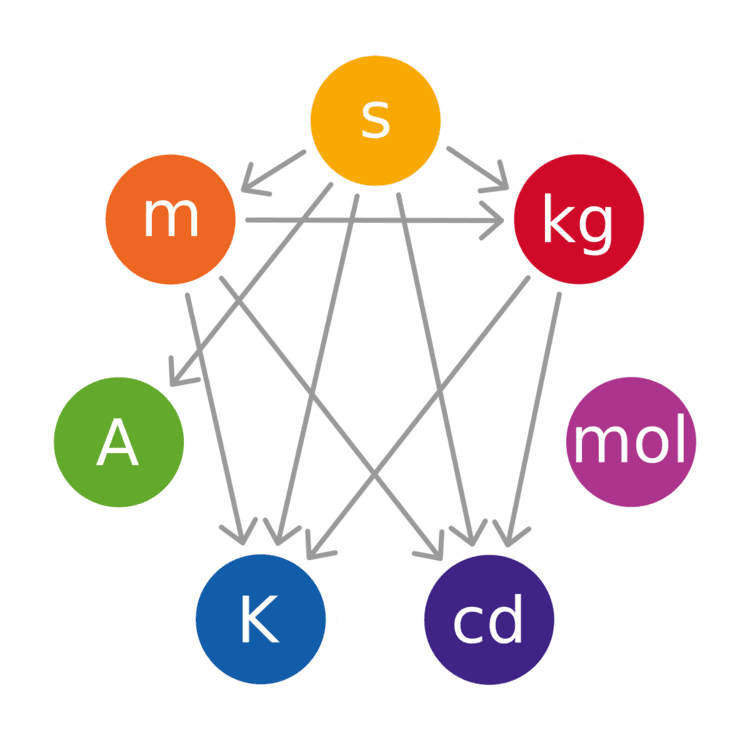 | ||
The International System of Units (SI) defines seven units of measure as a basic set from which all other SI units can be derived. The SI base units and their physical quantities are the metre for measurement of length, the kilogram for mass, the second for time, the ampere for electric current, the kelvin for temperature, the candela for luminous intensity, and the mole for amount of substance.
The SI base units form a set of mutually independent dimensions as required by dimensional analysis commonly employed in science and technology.
The names and symbols of SI base units are written in lowercase—for example, the metre (US English: meter) has the symbol m—except the symbols of those named after persons, which are written with an initial capital letter. Thus, the kelvin, named after Lord Kelvin, has the symbol K and the ampere, named after André-Marie Ampère, has the symbol A.
Many other units, such as the litre (US English: liter), are formally not part of the SI, but are accepted for use with SI.
Proposed redefinitions
The definitions of the base units have been modified several times since the Metre Convention in 1875, and new additions of base units have occurred. Since the redefinition of the metre in 1960, the kilogram is the only unit that is directly defined in terms of a physical artifact, rather than a property of nature. However, the mole, the ampere, and the candela are linked through their definitions to the mass of the platinum–iridium cylinder stored in a vault near Paris.
It has long been an objective in metrology to define the kilogram in terms of a fundamental constant, in the same way that the metre is now defined in terms of the speed of light. The 21st General Conference on Weights and Measures (CGPM, 1999) placed these efforts on an official footing, and recommended "that national laboratories continue their efforts to refine experiments that link the unit of mass to fundamental or atomic constants with a view to a future redefinition of the kilogram." Two possibilities have attracted particular attention: the Planck constant and the Avogadro constant.
In 2005, the International Committee for Weights and Measures (CIPM) approved preparation of new definitions for the kilogram, the ampere, and the kelvin and it noted the possibility of a new definition of the mole based on the Avogadro constant. The 23rd CGPM (2007) decided to postpone any formal change until the next General Conference in 2011.
In a note to the CIPM in October 2009, Ian Mills, the President of the CIPM Consultative Committee - Units (CCU) catalogued the uncertainties of the fundamental constants of physics according to the current definitions and their values under the proposed new definition. He urged the CIPM to accept the proposed changes in the definition of the kilogram, ampere, kelvin, and mole so that they are referenced to the values of the fundamental constants, namely Planck's constant (h), the electron charge (e), Boltzmann's constant (k), and Avogadro's constant (NA).
